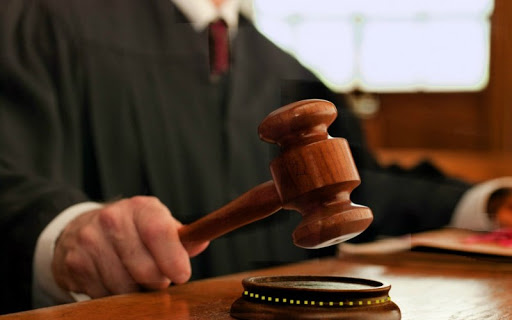Types of court judgment and how to object and appeal

[vc_row][vc_column][vc_column_text]
Is it possible to change the verdict issued by the court?
How to appeal a court ruling and change it?
In order to understand how to challenge and change the rulings issued in court, it is first necessary to know the types of rulings issued in Iranian courts in order to determine whether the issued ruling can be challenged or amended or not. He then outlined a way to protest.
[/vc_column_text][/vc_column][/vc_row][vc_row][vc_column][vc_column_text]
court judgment, after examining all the lawsuits and problems of the people and according to the laws of the country, proceed to issue and issue verdicts. These verdicts have different types such as legal, criminal and…. Each of them has different conditions and different ways of protesting, which we will examine in detail below.
[/vc_column_text][/vc_column][/vc_row][vc_row][vc_column][vc_column_text]

Types of court judgment
[/vc_column_text][/vc_column][/vc_row][vc_row][vc_column][vc_column_text]
Types of court rulings
1_Presence of presence and absence
The presence order means that both parties to the lawsuit have been present in court and this order has been issued with the participation of the litigants.
However, the verdict in absentia means that one of the litigants or his lawyer did not attend any of the court hearings and did not object to the verdict in writing, nor did he send any bill to the court in advance. Otherwise, the court will inform the said person based on the submitted bill and the verdict will be issued in person.
[/vc_column_text][/vc_column][/vc_row][vc_row][vc_column][vc_column_text]
The difference between a sentence in person and in absentia
The difference between a verdict in person and in absentia is more in the way of appealing and appealing against the verdict. Have no bill to court.
An appeal is filed against a person against whom a verdict has been issued in absentia, and according to the law, verdicts issued in absentia can be appealed by the injured party, but verdicts issued in absentia cannot be appealed.
[/vc_column_text][/vc_column][/vc_row][vc_row][vc_column][vc_column_text]
2- Declaration and founding verdict
A declaration is a judgment that has already been dealt with and that no new case has arisen that is different from the judgment, such as the provisions on returned checks or debtors’ claims for work that have existed for years and caused the ruling. It is not new and only the judge determines the debtor and the creditor and determines the type and manner of payment of the fee, which is the type of verdict issued.
The establishment decree means a decree that did not exist in the past, and with the issuance of this decree, a new situation is created. The decree that is issued in this way is called the founding decree.
[/vc_column_text][/vc_column][/vc_row][vc_row][vc_column][vc_column_text]
3_ Final and non-final verdicts
These types of judgments issued by the court are judgments that are finalized or other judgments that become final according to the conditions that we explain the final judgments and the judgments that become final below.
1- A verdict that cannot be appealed in the Supreme Court is considered a final verdict.
2- Judgments that have already been appealed in the Supreme Court and have been approved by the Supreme Court and can no longer be appealed are also among the final judgments.
3- Judgments that have passed the deadline for their appeal in the Supreme Court are also considered as final verdicts and can no longer be appealed.
4- The verdicts that have been issued in the primary court and the appellate court without the ability to appeal are also among the final verdicts and can no longer be appealed.
The difference between final and non-final verdicts is that if the verdict is finalized, it will be executed, otherwise it will not enter the executive stage at the moment.
[/vc_column_text][/vc_column][/vc_row][vc_row][vc_column][vc_column_text]
4- Definitive or indefinite sentences
Final or indefinite verdicts are another type of verdict issued by a court. In general, a final verdict is a verdict that must be enforced and it is no longer possible to change it, but an indefinite verdict is a verdict that can normally be It appealed.
The difference between these rulings is that they are enforceable, which is a final ruling that is enforceable, but an indefinite ruling can be appealed and appealed.
[/vc_column_text][/vc_column][/vc_row][vc_row][vc_column][vc_column_text]
5- Enforceable and non-enforceable sentence
If a final judgment is issued by the court, that sentence must be executed within the time period approved by the convicted person. Judgments of the judiciary request enforcement action.
[/vc_column_text][/vc_column][/vc_row][vc_row][vc_column][vc_column_text]
According to the law, and to ensure that all court rulings are issued in a completely correct manner and without any outside intervention and influence, for some of the rulings issued, the possibility of re-examination and the possibility of litigation is provided, hence the rulings issued by the court We examined in the above texts.
In the next article, we will fully explain the methods of challenging court rulings.
[/vc_column_text][/vc_column][/vc_row]

یک نظر
[…] conditions of society. But the customary condition of insult should be such that it is considered a crime and only the rudeness of individual behavior, such as not touching or rubbing or disrespecting, […]